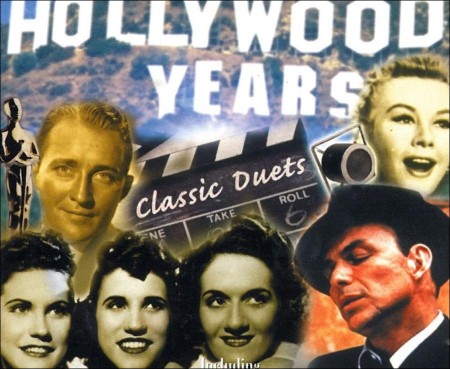There is only one Hollywood in the world. Movies are made in London, Paris, Milan and Moscow, but the life of these cities is relatively uninfluenced by their production. Hollywood is a unique American phenomenon with a symbolism not limited to this country. It means many things to many people.
For the majority it is the home of favored, godlike creatures. For others, it is a “den of iniquity”; a center for creative genius, or a place where mediocrity flourishes and able men sell their creative souls for gold; an important industry with worldwide significance, or an environment of trivialities characterized by aimlessness; a mecca where everyone is happy, or a place where cynical disillusionment prevails.
Rarely is it just a community where movies are made. For most movie-goers, particularly in this country, the symbolism seems to be that of a never-never world inhabited by glamorous creatures, living hedonistically and enjoying their private swimming pools and big estates, attending magnificent parties, or being entertained in famous night clubs. The other symbols belong to relatively small groups of people.
The United States has remained the dominant influence on world culture throughout the century, and this position has hardly been challenged. It has been by far the largest exporter of eultural commodities – larger than the rest of the world combined.

In addition to being a social phenomenon, which reflects a particular ideology, the Hollywood star system is a business strategy designed to generate large audiences and differentiate entertainment programs and products, and has been used for over seventy years to provide increasing returns on production investments.
As a marketing technique and business strategy, the system was first used in the theater industry. Between 1910 and 1948 Hollywood borrowed and expanded the star system and stock company approaches from the stage; and through the simultaneous exhibition of films throughout the world, the industry eventually established movie studio stables of stars and earned profits well in excess of those of the largest theatrical companies.
Significant historical changes in the status of movie stars have paralleled decisive technological, economic, and social changes that have affected the American film industry as a whole, such as the coming of sound, the Great Depression, and the rise and fall of movie attendance. The contractual terms and salaries for movie stars have also been affected by the same factors.
In the highly competitive and expanding market that existed between 1910 and 1920, the most popular silent-movie stars eventually obtained contractual terms that equalled and possibly exceeded their individual contributions to box-office success, and some of them also became involved in film production themselves, although the development of sound and its demand for experienced stage and radio performers ended the careers of many silent film stars. Those working during the early 1930s, when movie attendance declined and industry power was concentrated in the hands of a few studios, were placed in a poor bargaining position, and studios began exercising near autocratic control over the star system.
The Paramount antitrust decrees in the late 1940s resulted in a shift from a mature oligopoly/ monopoly, or semicompulsory cartel, involving the Big Five studios ( Warner Bros, Loew’s/ MGM, Paramount, RKO, and Twentieth Century-Fox) and the Little Three ( Universal, Columbia, and United Artists), to a bilateral oligopoly with six major distributor/ producers and a dozen nationwide theater circuits today. This shift created a slightly more competitive market that benefited the most popular movie stars.
Unfortunately, the decline in movie attendance and the rise in production costs, which also occurred during this period, left many less popular contract players unemployed, as stock companies disbanded. In the 1950s and 1960s, although many of the more popular stars remained under studio contract, they also obtained more liberal terms than existed during the studio period, sometimes receiving a percentage of the profits or becoming directly involved financially in film production for both tax advantages and artistic control.
During the 1960s and 1970s the absence of studio control forced Hollywood increasingly to rely upon other media, such as television and popular music, to cultivate stars who could then be exploited by the film industry. Eventually some scholars and executives began to question the validity of the star system, embracing instead the “auteur” approach, which suggested that the previous success of a director ensured box-office success better than did the supposed popularity of movie stars.
But, as the American film industry has argued almost from its infancy, cultural products play a crucial role in opening export markets for other goods and the way of life they promote. On the other hand the very existence of American dominated popular culture has been responsible for the development of national styles in fashion or media, as govemments try to resist the encroachment of a homogenized “world” culture, whether it emanates from New York, Hollywood, Paris or Tokyo.
This is ultimately not an argument about esthetic quality, but a demonstratian of real cultural, social, and finaily economic power. Since the cultural elite in European societies has corresponded closely to the economic and political elite, it has been able to dictate the terrns of the debate. This has, for example, been a powerful influence on British broadeasting, whose patrons insist, against ail evidence except cultural prejudice, that it provides the “least worst televisian in the world”.
The adaptations and documentaries which give British television its envied reputation for “quality” reproduce the “worthiest” remnants of British culture. As in Gerrnany, television has absorbed writing and directorial talent which might have contributed to a cinematic renaissance. Innovation has been contained within the hierarchies of television. Elsewhere in Europe the forrnal experimentation of the avant-garde and international Art Cinema has been rendered harmless by being kept within a cultural ghetto of smail metropolitan theaters for a middle-class elite, where its power to disrupt or subvert has been reduced to an untroublesome minimum.
On accasion, as in the Cinema Nova mavement in the 1960s in Brazil, cultural resistance has been linked to opposition to the political and economic dominance of the United States as well as to its cultural influence. Cinema Nova used the history, mythology and imagery of traditional Brazilian culture as the basis on which to revive a national culture free of North American domination. Much Third-World cinema has derived its impetus from an opposition to the cultural colonialism of Westem countries, which has often dominated distribution and thus hindered or prevented the emergence of an indigenous film industry.
The most enduring forrns of cultural nationalism have been those able to integrate imitations of American media forrns with a culturally specific, preferably traditional content: the martial arts films of Hong Kong; Japanese “home dramas”; or, largest and perhaps most spectacularly successful of all, the Indian cinema.
Curiously, the American film industry is required to be most sensitiye to the demands of audiences outside its own cultural boundaries, since it is dependent on foreign sales for more than half its income. This heavy dependence on foreign markets is one explanation for the continuing ability of American popular cultural forms to absorb and assimilate almost anything.
Polish filmmaker Andrej Wajda caught the other basic ingredient of their success: “The paradox is that because the American cinema is so commercial, because the pressure of money is so strong, everything in a film has to be the very best. That means the most expensive, but it alsa means the most authentic, the most honest. No half measures, everything on the edge of excess…. The amount the Americans are prepared to spend on making their films is in a way a sign of resped for the audience.”
Essentially the argument has changed little in substance, only in scale, from the complaints against Hollywood’s influence in the 1920s. As the mass audience for the electromic media began to decline and fragment in the West, broadcasting became increasingly internationalized through coproduetion arrangements, seeking its audience in many countries simply to pay the bills.
The media have been important forces in maintaining Western influence and interests in Third World countries after independence from colonial rule: into the 1980s the majority of joumalistic and technical staff continued to be trained by American or European agencies, and, partly as a result, to adopt Western values in regard to media content Equipment and programs have enabled broadcasting services to be established, but have inhibited local production because of its high cost by comparision to American programýning of much more ostentatious production qualities.
Related Link: View more Popular Culture stories
Views: 646







